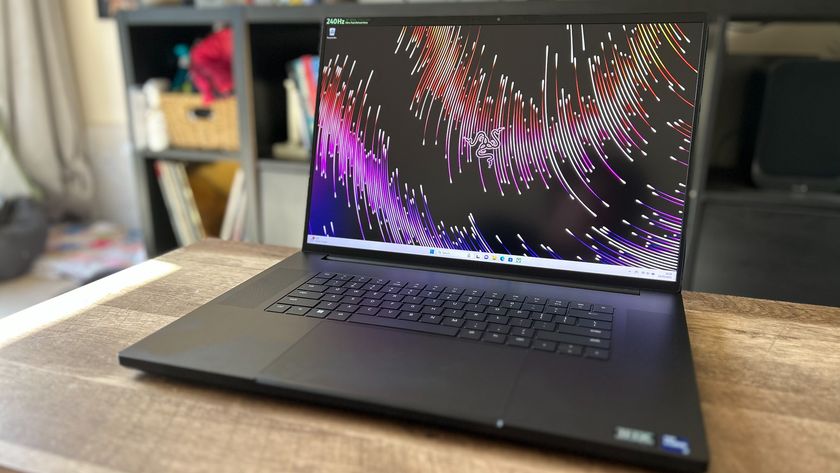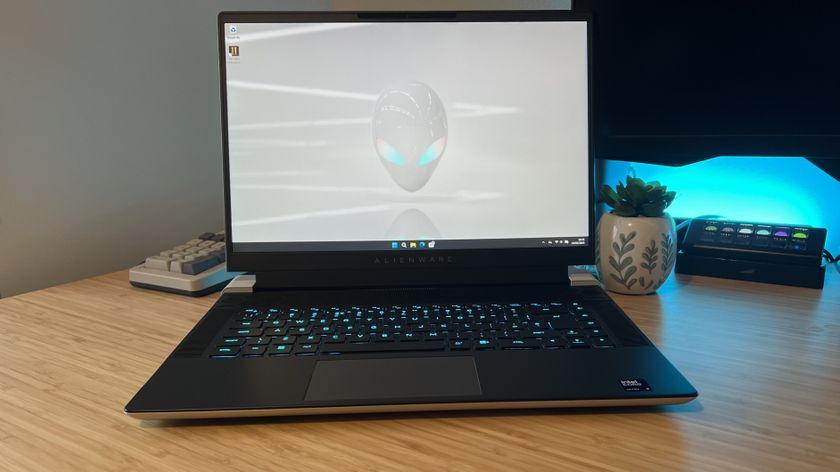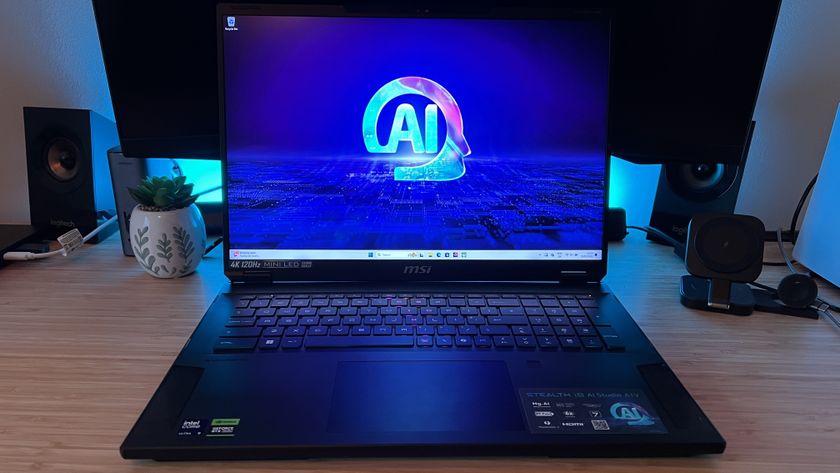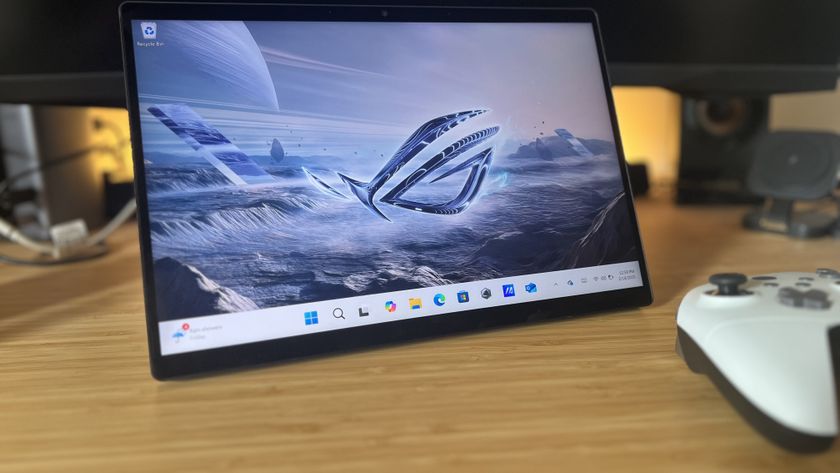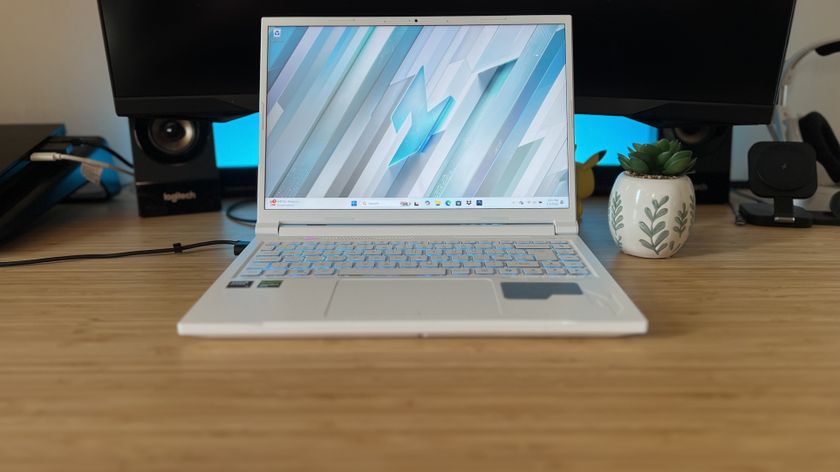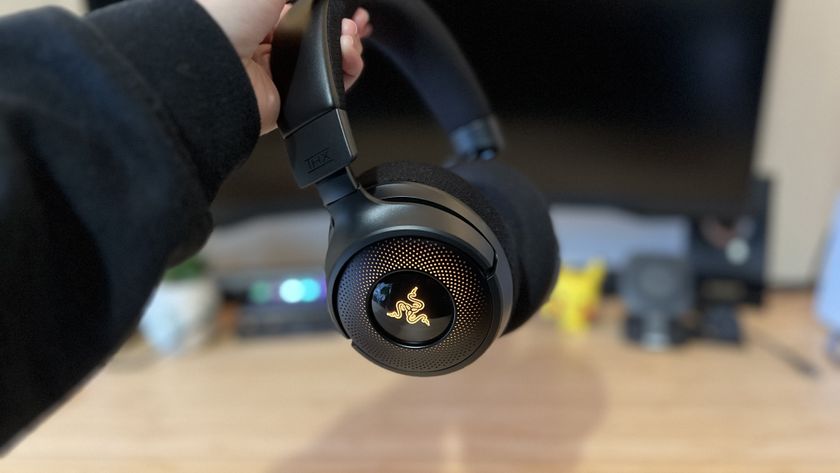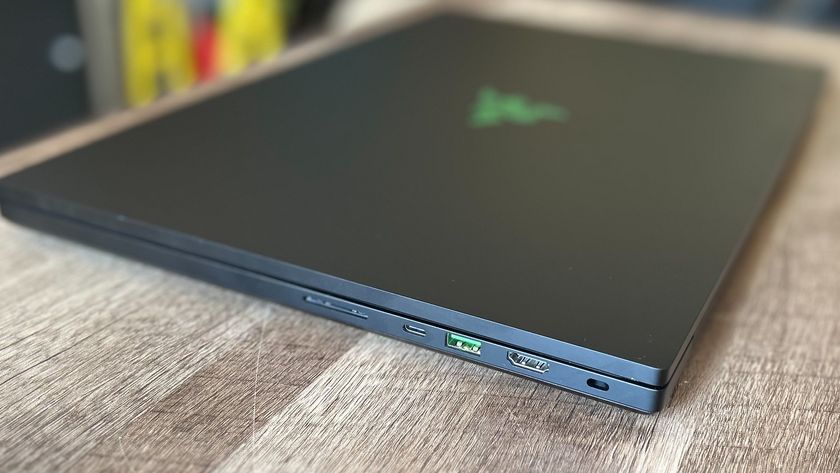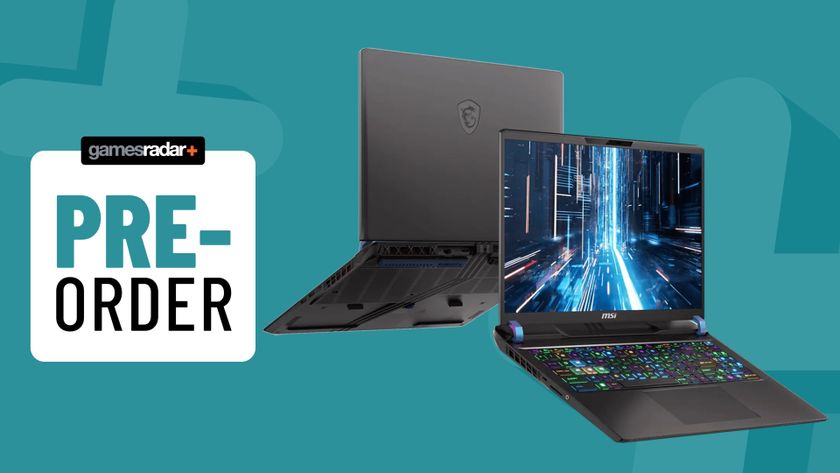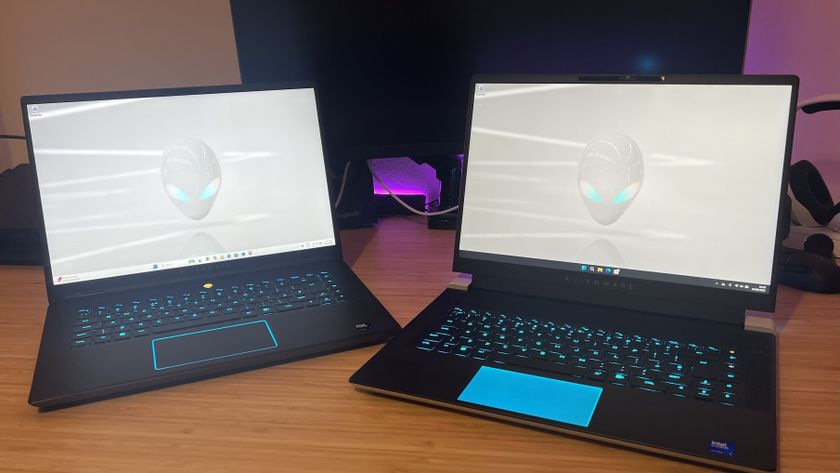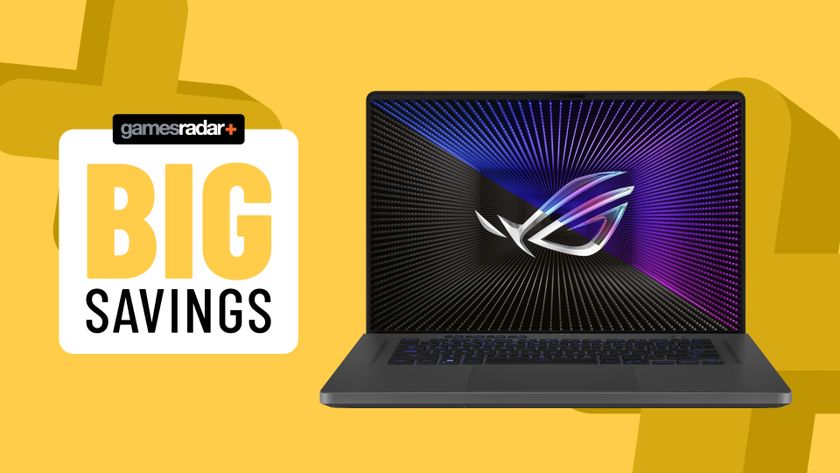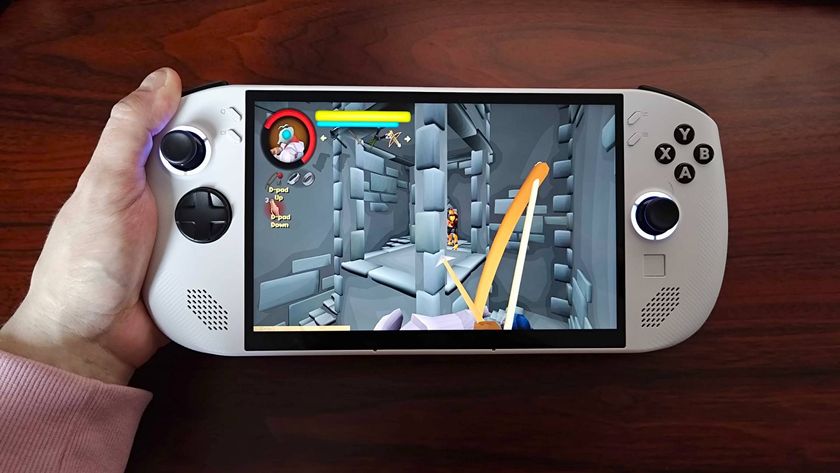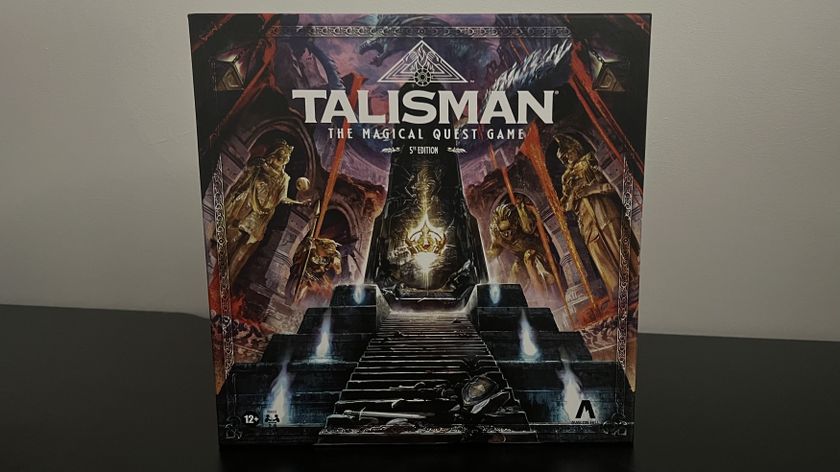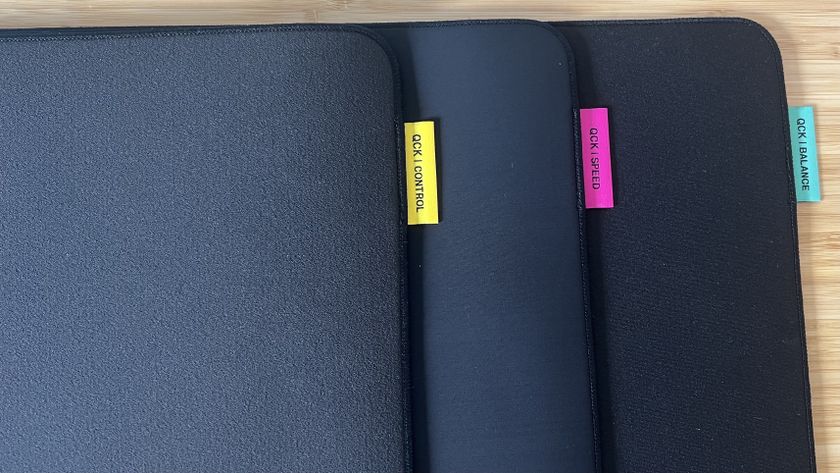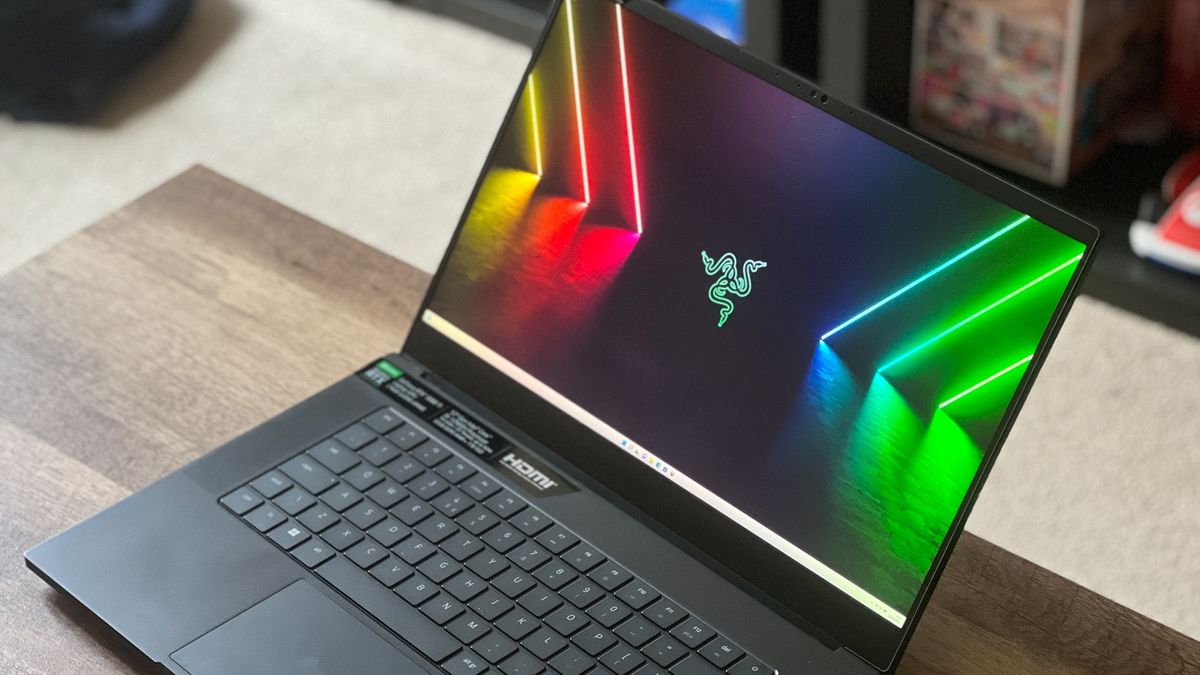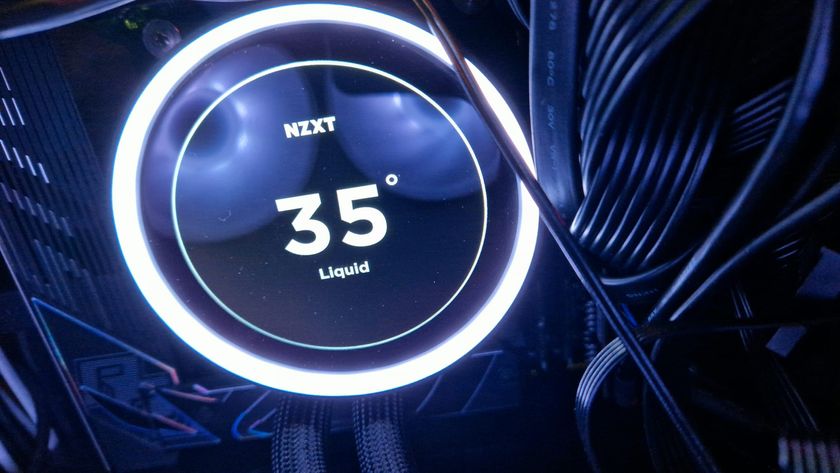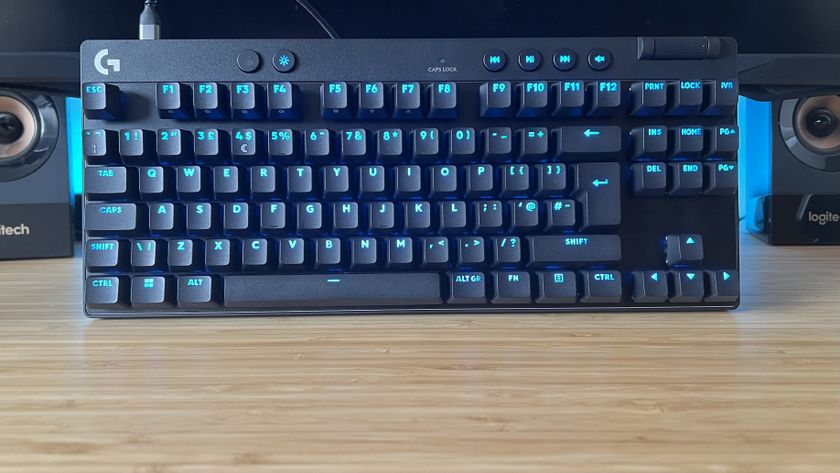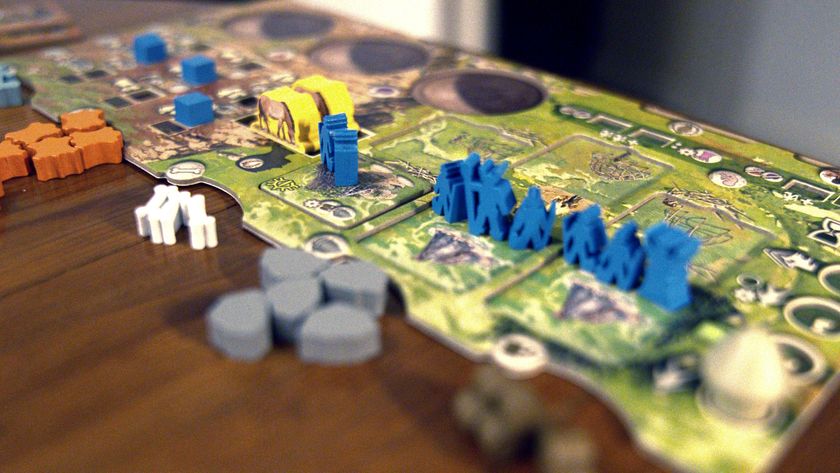GamesRadar+ Verdict
The Razer Blade 15 is a blindingly powerful machine, with the cost to match, but still manages to topple to competition in the luxury price range thanks to its 4K 144Hz display and luxury build quality.
Pros
- +
Cutting edge components
- +
Excellent color and contrast in the display
- +
Luxury design with solid build quality
Cons
- -
Proprietary charging connection
- -
Softer keyboard feel
Why you can trust GamesRadar+
The Razer Blade 15 has long reigned over the high-end world, consistently placing as one of the best gaming laptops on the market. 2022's refresh cements its position for another year, packing some truly eye-watering specs into a slimline, luxury chassis, and slapping a solid display on top. Of course, the top-of-the-range RTX 3080 Ti configuration we got our hands on will outprice a lot of the market at $3,999 - but if you're looking to reach 4K60+ and you have the cash to throw at that dream, look no further.
They're certainly not cheap, but with prices ranging from $2,499.99 for an RTX 3060 / i7-12800H model, there's plenty of choice for those shopping in the luxury bracket. That said, to really put this latest revision to the test, we put the 4K 144Hz i9-12900H configuration through its paces over the course of three weeks. Our conclusion: for folks with the money to spend, this is the best Razer laptop on the market.
Design
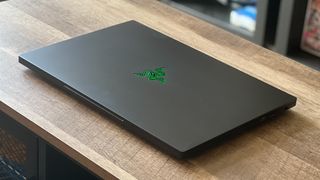
- Luxury matte black chassis
- Build quality feels durable and robust
- New ventilation system
Much remains unchanged from that classic Razer Blade design here, you're still getting a solid, matte black aesthetic with the robust strength of an aluminum chassis. Everything feels locked and loaded, though there's still some considerable flex in the display, and the hinge does have a noticeable wobble to it. Still, that hinge is super strong and can be lifted with just a finger without shifting the position of the lower half at all.
Razer has upped the ante when it comes to ventilation this time around, so you'll find extra vents around the bottom of the chassis, and the keys are larger with less space between them as well. Looking at that keyboard in more detail, you'll also find that the power button has been relegated to the main deck. This is becoming more and more common in slimline designs, and it didn't pose any problems for me seeing as I'm used to a similar layout elsewhere. That meant it didn't take too much muscle memory to navigate around the delete and backspace keys, though this is something to bear in mind if you're new to the design.
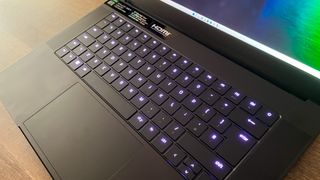
In classic fashion, the Razer Blade 15 eschews the fancy lighting and additional gimmicks of other machines and takes aim at a far more subtle aesthetic. The simple black design belies an incredibly powerful machine underneath, and with a solid build quality, additional cooling attention, and a 2kg weight there's a quiet power to this suave architecture.
Features
- Top of the range components available
- 4K 144Hz screen takes an edge over the competition
- Proprietary charging cable is frustrating
The new Razer Blade line focuses on the latest Ti versions of Nvidia's RTX 30-Series graphics cards, piling in Intel's 12th generation Alder Lake processors to boot. That means there's some serious next-gen power under the hood here.
Processor: Intel Core i9-12900H
GPU: RTX 3080 Ti
Memory: 32GB DDR5 4800MHz RAM
Display: 15.6-inch, 144Hz
Resolution: 3840 x 2160 (4K UHD)
Storage: 1TB M.2 NVMe PCIe 4.0 SSD
Ports: 3x USB-A Gen 2 ports, 1x USB-C / Thunderbolt 4, 1x USB-C, 3.5mm audio jack, SD card slot, HDMI
Connectivity: Killer Wireless 6E AX1690, Bluetooth 5.2
OS: Windows 11 Home 64-bit
Weight: 4.4lbs (2.01kg)
Only the MSI GE66 Raider and GS66 Stealth, Alienware X15 R2 and X17 R2, Asus ROG Zephyrus M16, and Gigabyte Aero 16 can pack that top-end card into their chassis' at the time of writing, and all for a similar price point (though many without that 144Hz 4K display to boast about). If you're looking for this luxury performance, then, the Razer Blade 15's features feel right for its price bracket.
After all, the offerings go well beyond those bleeding edge components, though some work harder than others to feel premium. You're getting upward firing speakers straddling the keyboard here, and boy do they fire. I was incredibly impressed with the sheer volume available here, with room-filling sound and a surprisingly detailed soundscape on offer. Of course, they're competing with the fan noise if you're cranking this thing up to 11, but there's some excellent detailing in here.
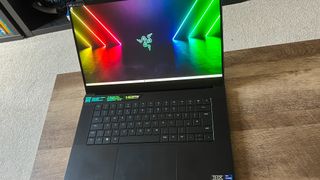
That 144Hz 4K screen is truly a sight to behold as well. Colors jump off this panel in Borderlands 2, and everything from autumnal landscapes to fiery hellscapes offered particularly strong clarity and detailing in Metro Exodus. The matte cover does dull the brightness a little here, but I was still able to appreciate even the darkest of set pieces in natural lighting.
The Razer Blade 15 ships with three USB-A Gen 2 ports, one USB-C / Thunderbolt 4, another USB-C, 3.5mm audio jack, SD card slot, HDMI, and a lock, all balanced on each side of the frame. You'll also find a 230W power brick in the box, and I clocked full charge time to be between 1.5 and 2 hours without usage.
This is where the features set of the Razer Blade 15 slightly falls, though. Proprietary charging cables are a nightmare, and this laptop has the beast to rule them all. The Blade 15's charger is a bulky two-pin affair, with a strangely heavy cable attached to the end. You won't be juicing this up on the go, and there's no hope of sneaking someone else's USB-C cable for a quick power up either.

Another small gripe comes with that keyboard. It's a lovely looking affair, with - obviously - bold Chroma RGB. However, there's very little travel distance here, even for a laptop, and that lack of tactile satisfaction did make longer holds feel a little weak. I was moving pretty quickly across this deck, thanks to the shorter actuation, but it certainly didn't feel as tight or precise as that of the Alienware x14.
Performance
- Excellent performance in Balanced mode preset
- Boosting CPU and GPU offers 4K 60fps in lighter games
- Still struggles to top 50fps in 4K on more demanding titles
You're paying for an RTX 3080 Ti machine here, so you can bet that performance is going to be strong. With all that cooling engineering under the hood, this thing absolutely flies. Cranking everything up in the Razer Synapse software (pushing both the CPU and GPU to their limits), I was reliably hitting 4K60 in titles like Shadow of the Tomb Raider, and just nudging that threshold in medium settings with some particle effects and textures dropped on heavier games like Metro Exodus as well. Nudging those settings up full whack on these more demanding experiences, however, we were still a little away from the dream.
Fire Strike: 20,171
Time Spy: 9,690
PC Mark 10: 7,340
Cinebench (Multi): 9,870
Crystal Disk Mark: 6,672.93 MB/s read; 4,942.86 MB/s write
Red Dead Redemption 2 managed 27fps on its Ultra mode in 4K resolution, and Metro Exodus was tailing behind at a 26fps. Lighter games were absolutely a sight to behold here, but it only took some tinkering to get a solid speed on the likes of Doom Eternal and Halo Infinite as well.
The fans can certainly kick up a fuss when you do turn those dials up, but I've heard far louder machines doing far less work. Still, if you don't want to plug into one of the best gaming headsets to drown out those whirrs, I was still getting some solid numbers from the balanced preset. 1080p at 79fps in Ultra on Total War: Three Kingdoms certainly isn't to be sniffed at, and Red Dead Redemption 2 was still clocking 67fps in 1440p as well.
| Row 0 - Cell 0 | High | Highest / Ultra |
| Shadow of the Tomb Raider | 1080p @ 101fps; 1440p @ 67fps; 4K @ 74fps | 1080p @ 97fps; 1440p @ 94fps; 4K @ 66fps |
| Total War: Three Kingdoms | 1080p @ 107fps; 1440p @ 67fps; 4K @ 33fps | 1080p @ 79fps; 1440p @ 49fps; 4K @ 23fps |
| Red Dead Redemption 2 | 1080p @ 84fps; 1440p @ 69fps; 4K @ 43fps | 1080p @ 67fps; 1440p @ 52fps; 4K @ 26fps |
| Metro Exodus | 1080p @ 87fps; 1440p @ 69fps; 4K @ 42fps | 1080p @ 67fps; 1440p @ 53fps; 4K @ 25fps |
| The Division 2 | 1080p @ 107fps; 1440p @ 78fps; 4K @ 45fps | 1080p @ 86fps; 1440p @ 61fps; 4K @ 35fps |
Should you buy the Razer Blade 15?

In 2022, the Razer Blade 15 is still doing exactly what its ancestors did - leading in high-end components and luxury performance. All of that sits under a price tag that will cause mid-range buyers to flee, but feels reasonable for anyone looking to invest in the best of the best. Its $4,000 / £4,000 cost is difficult to stomach if you're just looking to jump into the odd round of Fortnite or relax with some city builders, but with other machines offering similar internal specs in this price range, the Blade 15 does a lot to make your money work harder for you.
That 4K 144Hz display is certainly an outlier even in this high-end market, and the overall build quality and design can't be argued with either. Overall, I wouldn't recommend the vast majority of players sink their teeth into this bank-busting rig, but those on the hunt for the laptop to rule all laptops will find plenty of value here.
However, if you're not quite hitting that $3,000 - $4,000 price point, we'd recommend taking a look at the Razer Blade 14 for a similar aesthetic but a slightly lower price tag. Or, we'd recommend those after a similar luxury build with some cheaper components take a look at the Asus Zephyrus G15 instead.
How we tested the Razer Blade 15
I used the Razer Blade 15 for all my gameplay over the course of three weeks, while also using the rig for work purposes over the course of three days. I played Tunic, Doom Eternal, Red Dead Redemption 2, and Borderlands 2 in general everyday use, while stress testing 1080p, 1440p, and 4K performance in Shadow of the Tomb Raider, Metro Exodus, Red Dead Redemption 2, Total War: Three Kingdoms, and The Division 2. I also ran industry benchmark tests Cinebench, 3D Mark Time Spy and Fire Strike, PC Mark 10, and Crystal Disk Mark.
For more inspiration, we'd recommend checking out the best Alienware laptops, but we're also rounding up all the latest cheap Razer laptop deals from across the web as well. For more accessories, take a look at our guides to the best gaming keyboards and the best gaming mouse options available.

Managing Editor of Hardware at GamesRadar+, I originally landed in hardware at our sister site TechRadar before moving over to GamesRadar. In between, I've written for Tom’s Guide, Wireframe, The Indie Game Website and That Video Game Blog, covering everything from the PS5 launch to the Apple Pencil. Now, i'm focused on Nintendo Switch, gaming laptops (and the keyboards, headsets and mice that come with them), PS5, and trying to find the perfect projector.
